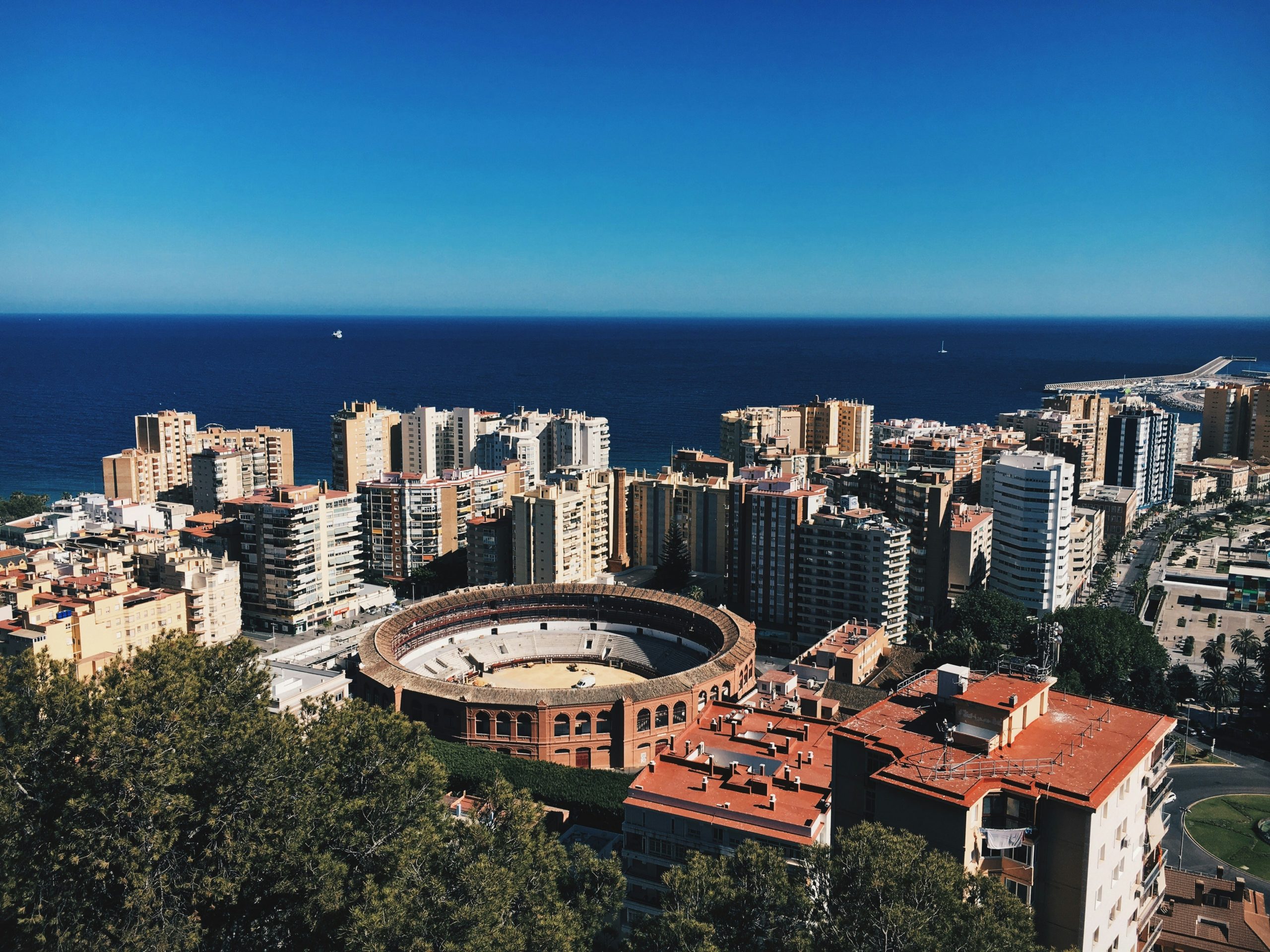Welcome to Malaga, a city steeped in history, culture, and Andalusian charm! Today, we invite you to embark on a captivating journey through the historic heart of this gem in southern Spain. From the bustling Atarazanas Market to the gleaming Malaga Port, this route will lead you through some of the city’s most iconic landmarks.
1. Atarazanas Market
Our adventure commences at the vibrant Atarazanas Market, a sensory feast showcasing the colors, aromas, and flavors of Andalusian cuisine. Immerse yourself in the authentic atmosphere of this market, where you’ll encounter an array of fresh produce and a unique ambiance that promises to astonish.
Nestled in the heart of Malaga, the Central Market of Atarazanas stands as an architectural marvel and a bustling hub of local life. Dating back to the 14th century, this market bears witness to the city’s rich cultural and commercial heritage.
Adorned with a striking Neo-Moorish facade, the market seamlessly blends history with modernity. Its wrought-iron gates, once the entry to the ancient shipyard (atarazana), now beckon visitors to savor an authentic gastronomic experience.
Upon entry, one is enveloped in a kaleidoscope of hues, scents, and tastes. Stalls brim with a bounty of fresh delights: from seasonal fruits and vegetables to the day’s catch of fish and seafood. Friendly vendors eagerly offer samples, inviting visitors to discover the culinary treasures of the region.
Beyond its gastronomic allure, the Central Market of Atarazanas serves as a hub for social and cultural exchange. Locals converge here to swap tales, exchange traditional recipes, and revel in the vibrant ambiance.
Over time, the market has evolved to meet the changing tastes and needs of the community. Today, alongside fresh fare, one can find an array of gourmet delights, local crafts, and unique souvenirs that reflect Malaga’s creative spirit.
The opening hours are from Monday to Saturday, from 8:00 to 15:00, and it’s closed on Sundays.
More than just a shopping destination, the Central Market of Atarazanas is a symbol of identity and a cornerstone of daily life in Malaga. To visit is to immerse oneself in the authenticity and vitality of the city—a captivating experience that leaves an indelible mark on every traveler’s heart.
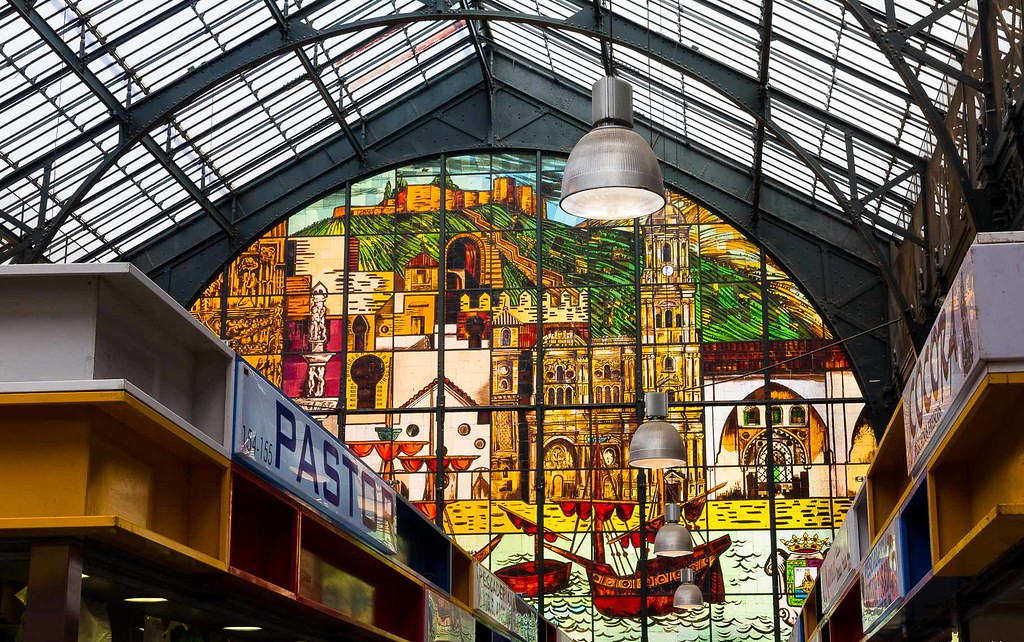
2. La Calle Larios
Our journey continues along the elegant La Calle Larios, hailed as the main artery of Malaga. Lined with fashionable boutiques, charming cafes, and splendid architecture, this pedestrian thoroughfare offers an enchanting glimpse into local life.
Marqués de Larios Street, nestled in Malaga’s heart, transcends mere pedestrianism—it pulsates with urban vitality, cultural fervor, and dynamic commerce. Since its inauguration in the 19th century, this street has stood as a beacon for locals and visitors alike, beckoning all to savor the true essence of Malaga.
As you wander La Calle Larios, you’re enveloped in architectural splendor and a vibrant ambiance. Historic facades showcase an array of styles, from Renaissance to Neoclassical, providing a picturesque backdrop for leisurely strolls. Cafes, eateries, and boutiques entice you to pause and bask in the rhythm of urban life.
Yet, La Calle Larios transcends its architectural grandeur and culinary delights—it’s a bustling marketplace. From luxury emporiums to family-run establishments, it offers an eclectic array of options to suit every taste and budget. Here, visitors can peruse the latest trends, acquire artisanal treasures, or simply revel in a day of retail therapy amidst unparalleled surroundings.
But La Calle Larios is more than a shopping mecca—it’s a melting pot of cultures and lifestyles. From cultural soirées to impromptu performances, the street buzzes with an energy that promises excitement at every turn.
In essence, La Calle Larios embodies the heartbeat of Malaga—a fusion of tradition and modernity, where every step unveils a new adventure. Whether delving into the city’s history, savoring its vibrant commercial scene, or simply soaking in its local flavor, this iconic thoroughfare promises an unforgettable journey through the enchanting city of Malaga.
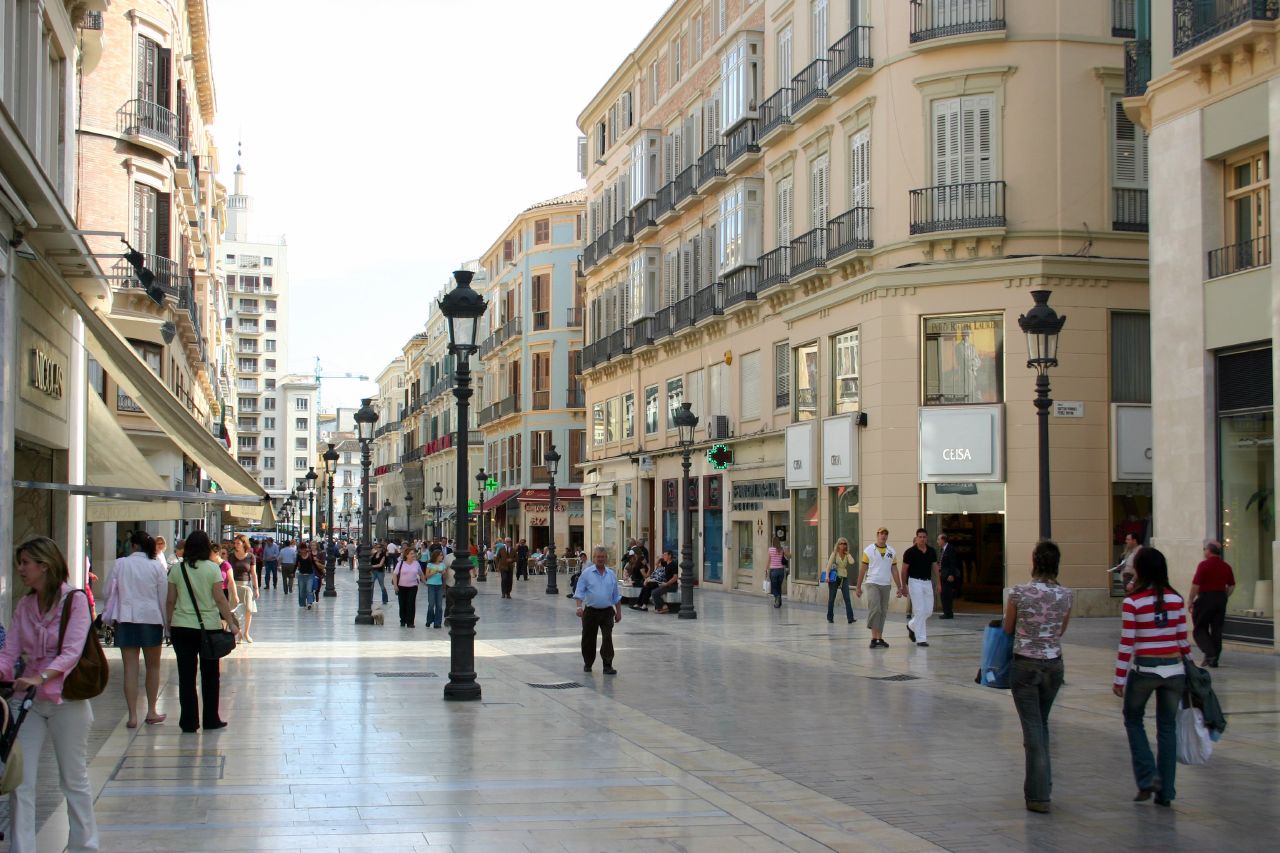
3. Plaza de la Constitución
Nestled in the heart of the historic center, lies the lively Plaza de la Constitución. Surrounded by historic edifices and bustling with cafes and boutiques, this square serves as a cherished meeting point for locals and visitors alike.
The Plaza de la Constitución, ensconced in Malaga’s historic core, stands as an iconic emblem of the city’s vibrant essence and storied past. This charming square, adorned with quaint outdoor cafes, majestic architecture, and a lively ambiance, is a cultural nexus where history, tradition, and contemporary life converge in Malaga.
At its center, the Fuente de Génova—a beautiful ornamental fountain—adds a touch of elegance to the surroundings. Flanked by whitewashed facades and balconies bedecked with flowers, the square exudes a unique charm that beckons all to pause and revel in its splendor.
Throughout the ages, Plaza de la Constitución has borne witness to myriad historical events, remaining a focal point for Malagueños. From cultural festivities to local celebrations, the square resonates with the infectious energy of its residents and visitors.
Beyond its historical and cultural significance, Plaza de la Constitución thrives as a hub for leisure and commerce. Cobblestone avenues teem with a variety of shops, boutiques, and eateries, inviting visitors to peruse local craftsmanship, indulge in Malagueño delicacies, and savor the city’s vibrant social scene.
A sojourn to Plaza de la Constitución is a requisite for those seeking to truly immerse themselves in the pulse of Malaga. Whether relishing a coffee overlooking the square, browsing quaint boutiques, or simply savoring the lively atmosphere, this iconic plaza offers a window into the life and culture of one of Spain’s most captivating cities.
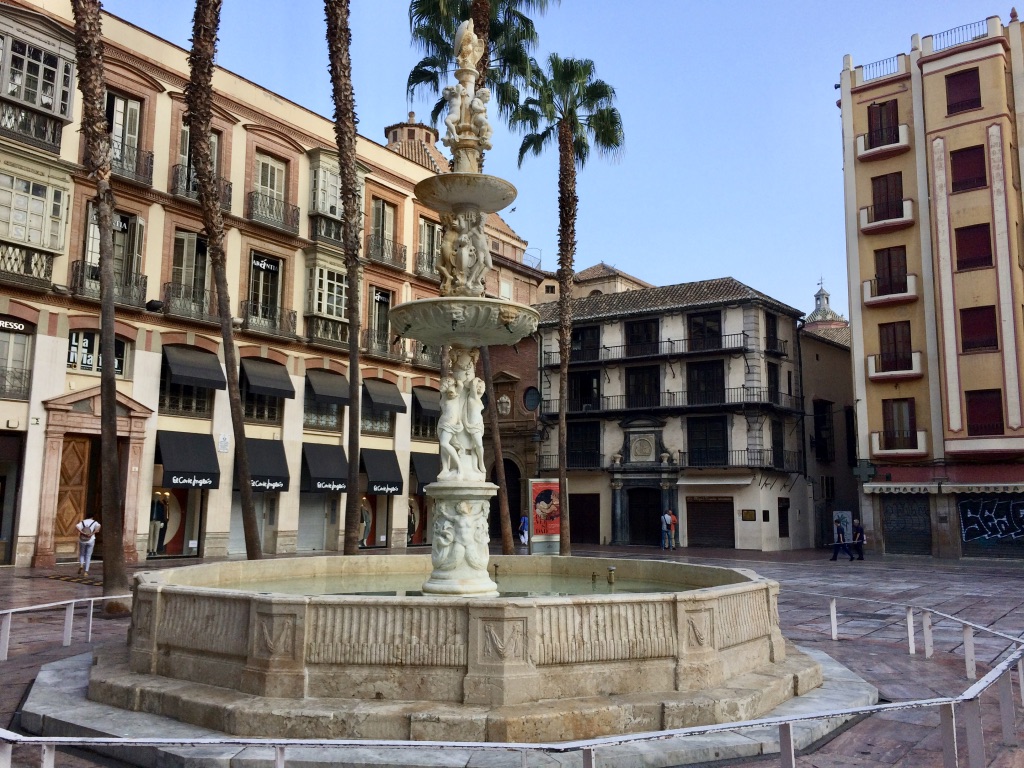
4. Malaga Cathedral
Behold the awe-inspiring Malaga Cathedral, affectionately dubbed «La Manquita» for its incomplete tower. Marvel at its magnificent Renaissance and Baroque architecture, which rank it among the city’s most iconic landmarks.
The majestic Cathedral of the Incarnation, fondly known as Malaga Cathedral, stands as a testament to the city’s grandeur and religious fervor. Nestled in the heart of the historic center, this imposing architectural marvel melds late Gothic and Renaissance styles, captivating visitors with its unparalleled beauty.
Nicknamed «La Manquita» (The One-Armed Lady) due to its unfinished tower, the cathedral boasts a monumental facade adorned with intricate details, drawing visitors into its sacred precincts. Within, the cavernous nave, resplendent chapels, and exquisite altarpieces and artworks inspire reverence and wonder.
A highlight of the cathedral is its splendid Baroque organ, presiding majestically in the high choir. Moreover, its treasury houses a trove of sacral treasures—paintings, sculptures, and liturgical objects of inestimable historical and artistic value—enriching the spiritual and cultural heritage of Malaga.
Beyond its religious significance, Malaga Cathedral serves as a cultural beacon, hosting a myriad of celebrations, liturgical events, and artistic exhibitions throughout the year. Thus, it stands not only as a place of worship but as a symbol of the city’s identity and artistic legacy.
The opening hours are from Monday to Friday, from 10:00 to 19:00, on Saturdays from 10:00 to 18:00, and on Sundays from 14:00 to 18:00.
The ticket price varies starting from 10 euros. You can check all the options on the official website.
In essence, the Cathedral of the Incarnation of Malaga transcends its ecclesiastical role—it is a veritable architectural masterpiece, a repository of sacred art, and an enduring symbol of the city’s splendor.
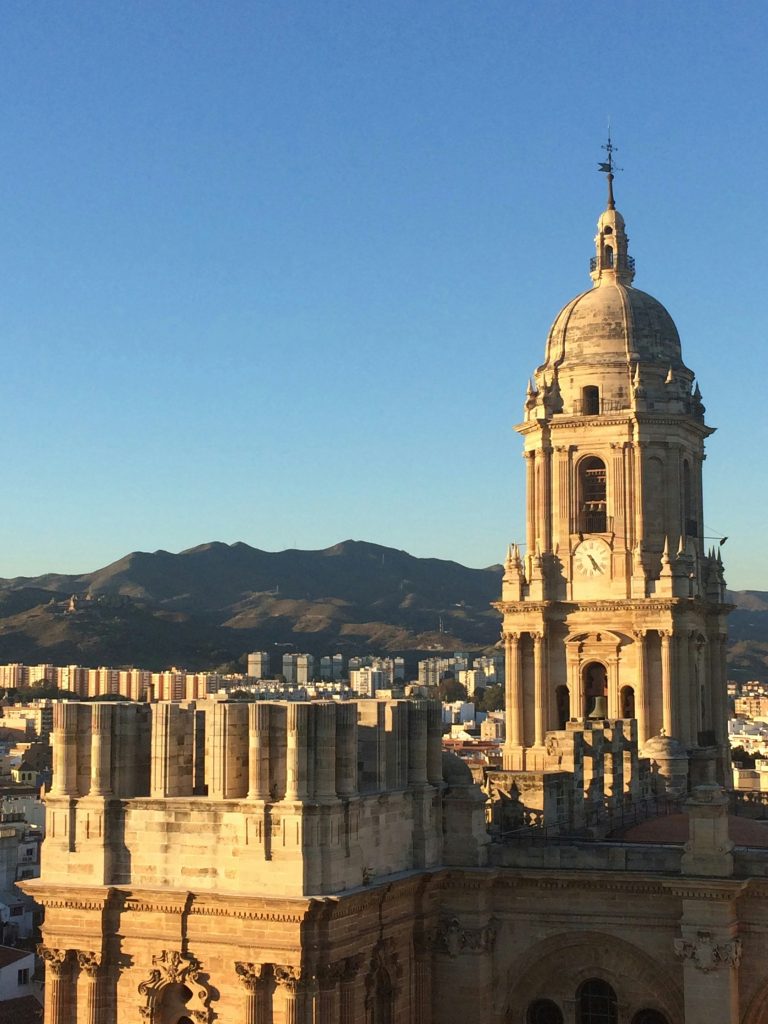
5. Roman Theater
Transport yourself back in time to the Roman era with a visit to the Roman Theater of Malaga, nestled at the foot of the Alcazaba. Explore the remnants of this ancient amphitheater, which evoke the grandeur of the city’s Roman past.
The Roman Theater of Malaga stands as an archaeological marvel, offering a glimpse into the ancient Roman settlement of Malaca. Constructed in the 1st century BC during the reign of Emperor Augustus, this monumental structure served as a venue for entertainment and communal gatherings, embodying the cultural richness of the era.
Although centuries have passed since its heyday, the theater’s grandeur endures. Unearthed in 1951 during construction work, it has undergone extensive restoration, revealing its original splendor and significance.
Today, the Roman Theater of Malaga remains a prominent tourist attraction, inviting visitors to wander its tiers, marvel at its stage, and explore the surrounding archaeological site. Amidst the ruins of ancient houses and structures, one can sense the echoes of a bygone era, where art, culture, and community thrived.
Beyond its historical allure, the theater serves as a vibrant cultural venue, hosting theatrical performances, concerts, and festivals that honor its legacy as a center of entertainment. Thus, it bridges the gap between antiquity and modernity, offering a dynamic space where history comes alive.
The opening hours are from Tuesdays to Saturdays, from 10:00 to 18:00, on Sundays from 10:00 to 16:00, and it’s closed on Mondays.
A visit to the Roman Theater of Malaga is a journey through time—an opportunity to immerse oneself in the city’s rich heritage and appreciate the enduring legacy of its Roman past.
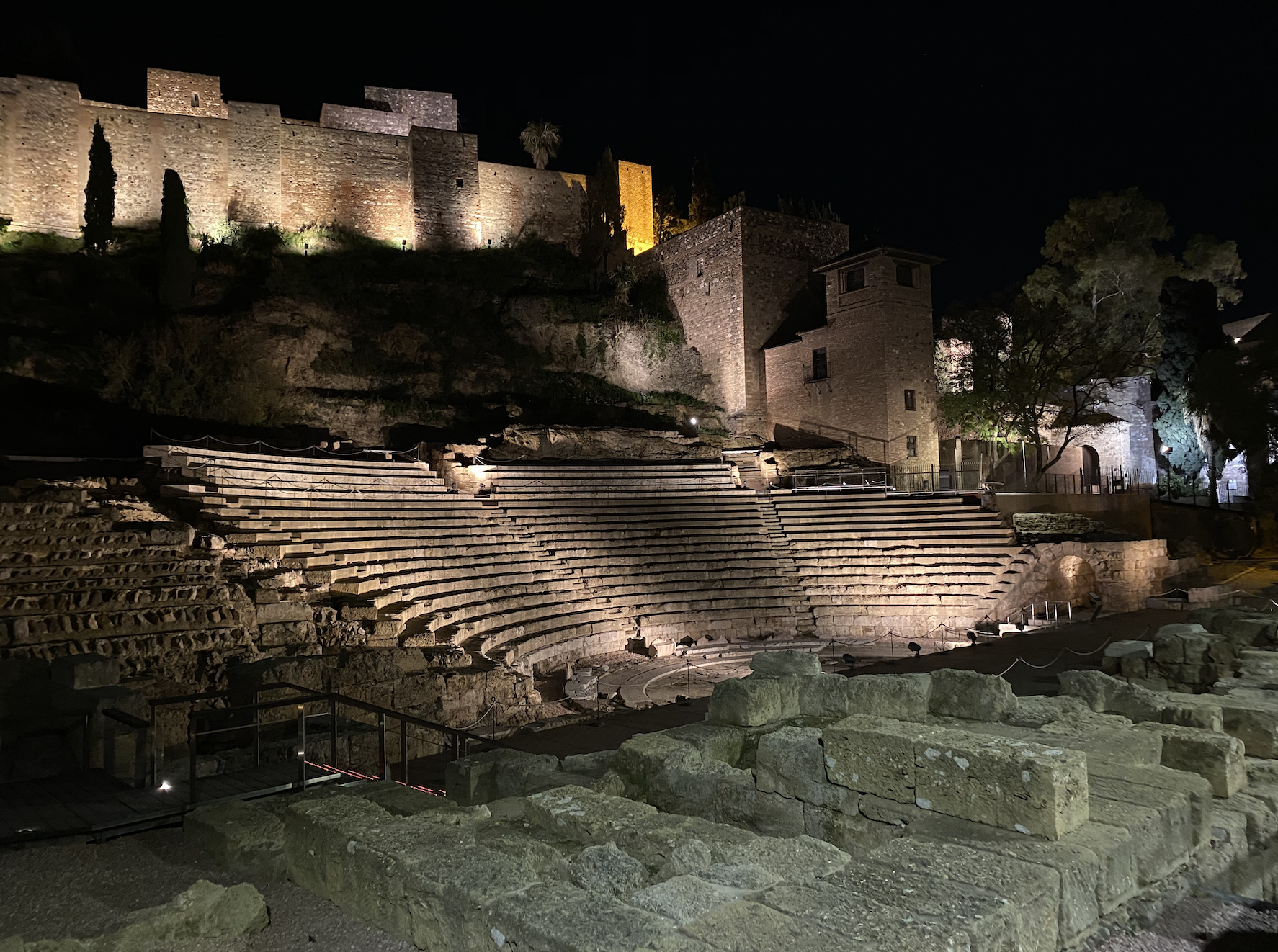
6. Alcazaba of Malaga
A short stroll from the Roman Theater leads to the majestic Alcazaba of Malaga, a Moorish fortress perched atop a hill. Delight in its formidable walls, verdant gardens, and intricate architectural details as you soak in panoramic views of the city and the sea.
The Alcazaba of Malaga stands as a testament to the city’s multicultural heritage, its imposing silhouette commanding the skyline. Built in the 11th century during the Moorish rule, this fortified palace embodies the splendor of Islamic architecture and the strategic importance of its perch above the city.
Perched atop a hill overlooking the historic center, the Alcazaba offers sweeping vistas of Malaga and the Mediterranean. Its sturdy walls, punctuated by defensive towers, create an aura of strength and resilience amidst the urban landscape.
As visitors traverse its labyrinthine passages and tranquil courtyards, they are transported to a bygone era, where Moorish artisans crafted intricate designs and adorned surfaces with vibrant tiles. The Arched Gate, a magnificent example of Islamic architecture, welcomes guests with its timeless elegance.
Atop the Alcazaba’s towers, one can marvel at the panorama below, envisioning the city as it once was—a thriving hub of commerce and culture. Within the fortress, the Archaeological Museum showcases artifacts that trace Malaga’s history from antiquity to the Muslim era, enriching the visitor’s understanding of the region’s heritage.
The Alcazaba’s verdant gardens offer respite from the bustling city below, inviting visitors to wander amidst fragrant blooms, bubbling fountains, and shaded pathways. Here, amidst the tranquil beauty, one can reflect on the fortress’s enduring legacy and the cultural tapestry of Malaga.
The Alcazaba has a summer schedule and a winter schedule.
- Winter schedule (November 1 – March 31): Opens at 9:00 and closes at 18:00 (Last entry at 17:15).
- Summer schedule (April 1 – October 31): Opens at 9:00 and closes at 20:00 (Last entry at 19:15).
The ticket price varies starting from 3.50 euros. You can check all the options on the official website.
In essence, the Alcazaba of Malaga is more than a historic monument—it is a living testament to the city’s resilience, ingenuity, and cultural richness. A visit to this architectural gem promises an immersive journey through Malaga’s storied past and a deep appreciation for its enduring beauty.
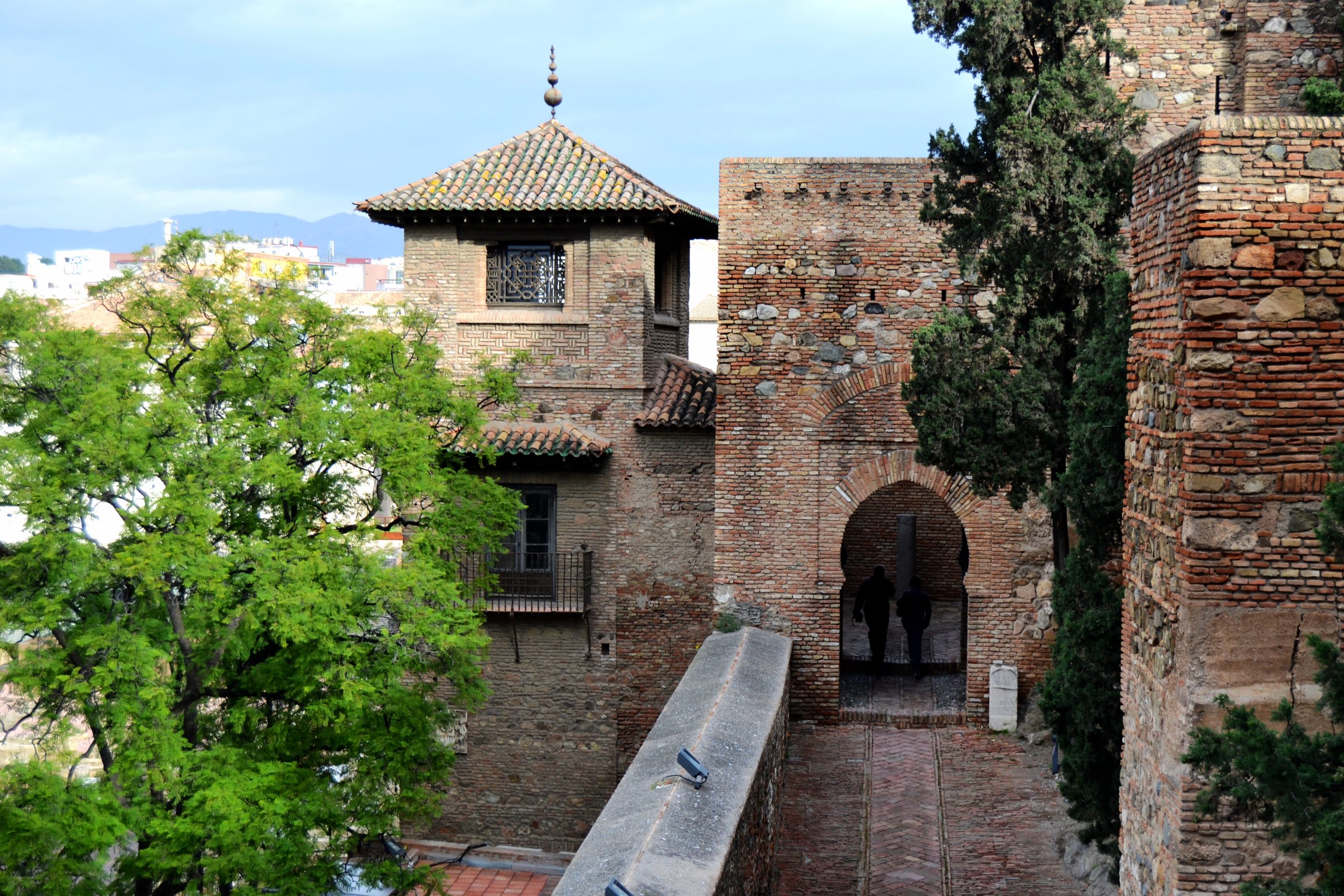
7. Castle of Gibralfaro
From the Alcazaba, a leisurely walk leads to the Castle of Gibralfaro, perched atop a hill overlooking the city. This Arab fortress offers commanding views of Malaga and the Mediterranean, beckoning history enthusiasts and photographers alike.
The Castle of Gibralfaro stands as a proud sentinel, its ancient walls bearing witness to centuries of history. Built in the 10th century by the Moors, this fortified castle served as a strategic stronghold, safeguarding the city and its inhabitants.
Perched atop a hill, the Castle of Gibralfaro offers unparalleled views of Malaga’s urban panorama and the azure expanse of the Mediterranean. Its rugged ramparts and watchtowers provide a glimpse into the city’s past, evoking images of ancient sentinels keeping vigil over the coastal landscape.
Linked to the Alcazaba by the fortified pathway known as the Coracha, the castle offers a seamless journey through Malaga’s history. Visitors can traverse the same paths as generations past, imagining the castle’s role in defending against invaders and preserving the city’s sovereignty.
Today, the Castle of Gibralfaro remains a popular destination for history enthusiasts and sightseers alike. Its historic walls offer a captivating backdrop for exploration, while its panoramic viewpoints provide the perfect vantage point for capturing Malaga’s beauty.
The Castle of Gibralfaro has a summer schedule and a winter schedule.
- Winter schedule (November 1 – March 31): Opens at 9:00 and closes at 18:00 (Last entry at 17:15).
- Summer schedule (April 1 – October 31): Opens at 9:00 and closes at 20:00 (Last entry at 19:15).
The ticket price varies starting from 3.50 euros. You can check all the options on the official website.
Within the castle grounds, a visitor center and café offer opportunities for relaxation and refreshment, allowing guests to linger amidst the ancient ruins and absorb the castle’s rich history. Whether admiring the views, exploring the fortress’s nooks and crannies, or simply soaking in the ambiance, a visit to Castle of Gibralfaro promises an unforgettable experience.
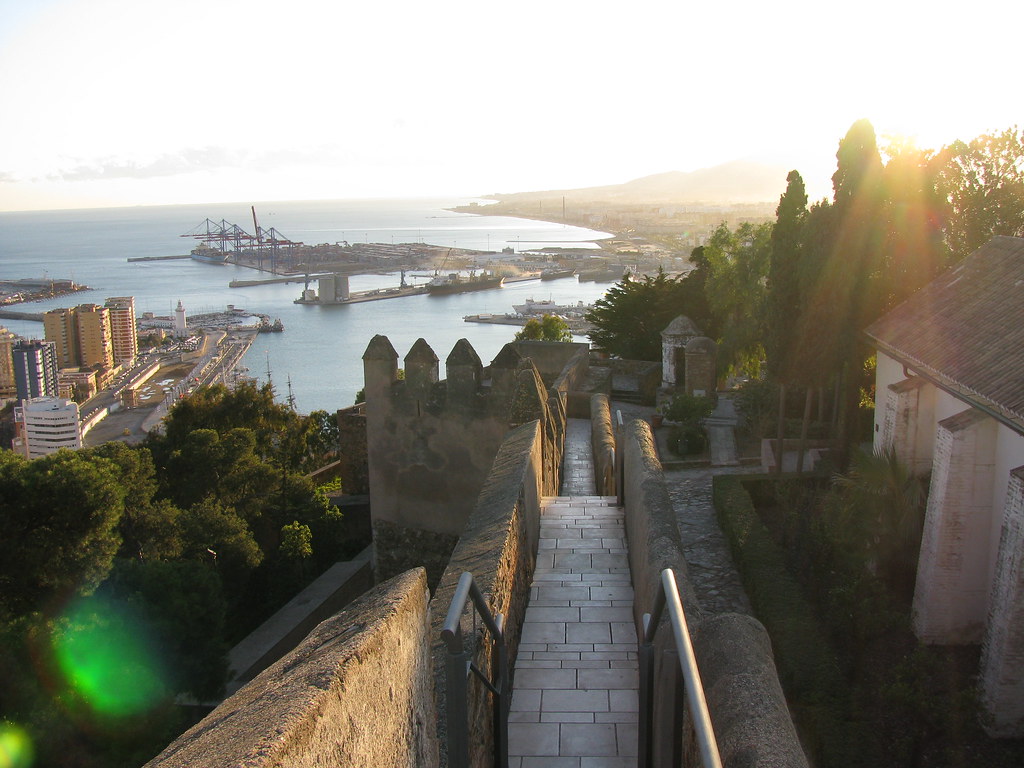
8. Plaza de Toros
Our journey culminates at the Plaza de Toros, one of Spain’s oldest bullrings. Though controversial to some, this iconic arena stands as a cultural emblem of bullfighting in Andalusia, inviting visitors to contemplate its significance in Spanish tradition.
The Plaza de Toros de la Malagueta stands as a testament to the enduring tradition of bullfighting in Malaga. Situated in the La Malagueta neighborhood, this historic bullring has been an integral part of the city’s cultural fabric for over a century.
Constructed in 1874, the Plaza de Toros de la Malagueta boasts distinctive architecture and a storied past. Its iconic red-and-white facade and majestic archways evoke a sense of nostalgia and reverence, reflecting the timeless allure of bullfighting in Spanish culture.
For centuries, bullfighting has been a cherished tradition in Malaga, and the Plaza de Toros de la Malagueta serves as its hallowed arena. During the annual Feria de Malaga in August, the bullring pulsates with the energy of spirited bullfights, drawing spectators from near and far.
Beyond its role in bullfighting, the Plaza de Toros de la Malagueta hosts a variety of cultural events, concerts, and festivals throughout the year. Its historic significance and architectural grandeur make it a magnet for tourists and locals alike, offering a glimpse into the cultural heritage of Malaga.
The opening hours of the Antonio Ordóñez Bullfighting Museum are from Mondays to Fridays, from 9:00 to 14:00, and it is closed on Saturdays and Sundays. The entrance fee is 1.80 euros.
Additionally, various events are held throughout the year. More information here.
A visit to the Plaza de Toros de la Malagueta provides insight into the complex tapestry of Spanish tradition and invites contemplation on the role of bullfighting in contemporary society. Whether admiring its architectural splendor or witnessing a bullfight firsthand, visitors are sure to gain a deeper appreciation for this iconic cultural institution.
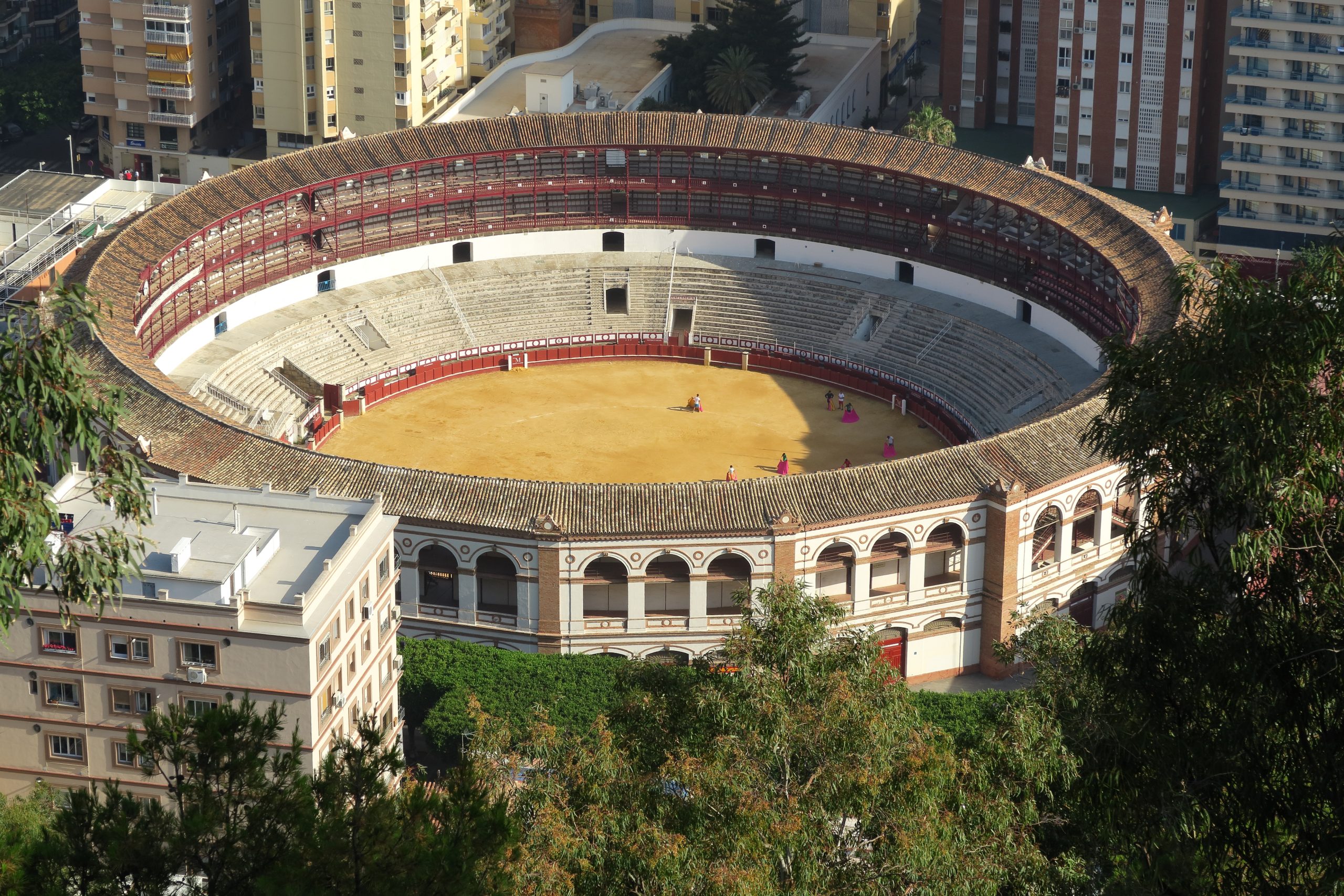
9. The Port of Malaga
Our journey concludes at the modern and vibrant Port of Malaga, specifically at Muelle Uno. Here, visitors can unwind by the sea, savor delectable cuisine at waterfront restaurants, or peruse the shops and galleries lining the promenade.
The Port of Malaga stands as an emblem of maritime heritage and urban dynamism, seamlessly blending history with contemporary allure. Situated in the heart of the city, this bustling harbor offers a diverse range of commercial, tourist, and recreational activities, making it a focal point for both locals and visitors.
With origins dating back to Phoenician times, the Port of Malaga has long served as a vital hub for trade and navigation in the region. Today, it remains one of southern Spain’s foremost ports, equipped with modern facilities for cruise ship arrivals, cargo handling, and fishing operations.
Beyond its commercial functions, the Port of Malaga has emerged as a popular tourist destination, drawing visitors with its picturesque promenades and vibrant atmosphere. The Muelle Uno, a leisure and shopping district adjacent to the port, is particularly beloved among tourists, offering a diverse array of boutiques, eateries, and entertainment venues.
As visitors stroll along the waterfront promenade, they can admire the bobbing boats and yachts, soak in panoramic views of the Mediterranean, or simply bask in the warm Andalusian sun. The Muelle Uno beckons with its charming ambiance and inviting al fresco dining options, making it an ideal spot for leisurely exploration and relaxation.
Moreover, the Port of Malaga is renowned for its lively nightlife, with numerous bars and clubs dotting the waterfront. During the summer months, the port comes alive with outdoor concerts, cultural events, and festivals, creating an electrifying atmosphere that captivates visitors and locals alike.
In summary, the Port of Malaga epitomizes the city’s vitality and diversity, offering a rich tapestry of experiences for all who visit. Whether savoring its panoramic views, exploring its tourist attractions, or immersing oneself in its vibrant nightlife, the port promises an unforgettable journey through the vibrant coastal city of Malaga.
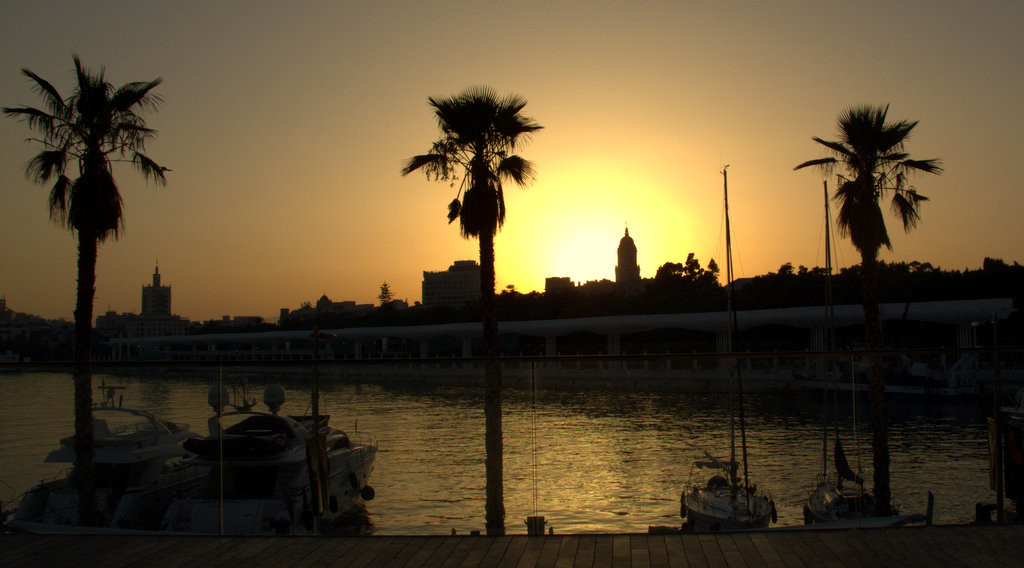
In conclusion, this curated route through the historic center of Malaga offers a captivating journey through the ages, from the Roman era to the pulsating contemporary life of the city. Prepare to immerse yourself in the rich tapestry of history, culture, and beauty that defines Malaga at every step of the way!

